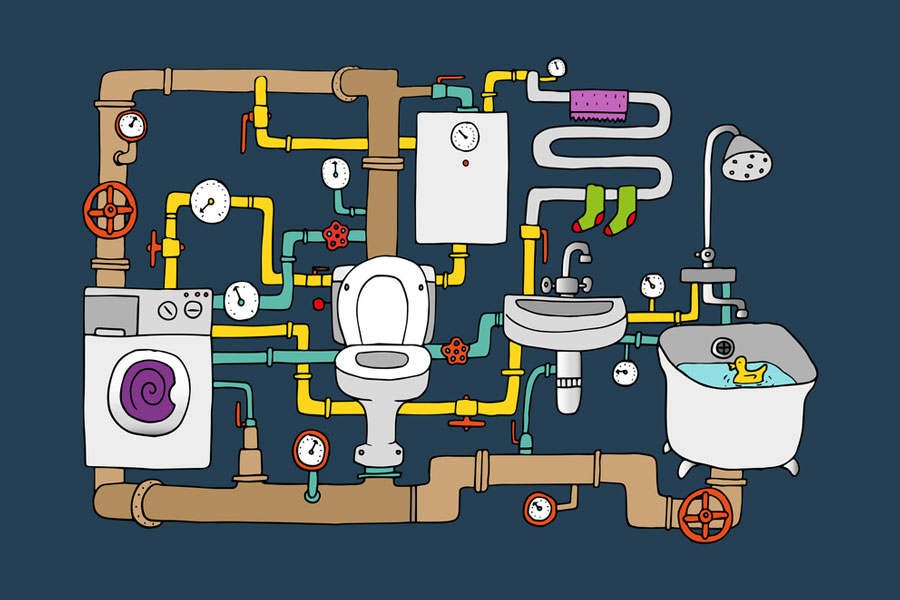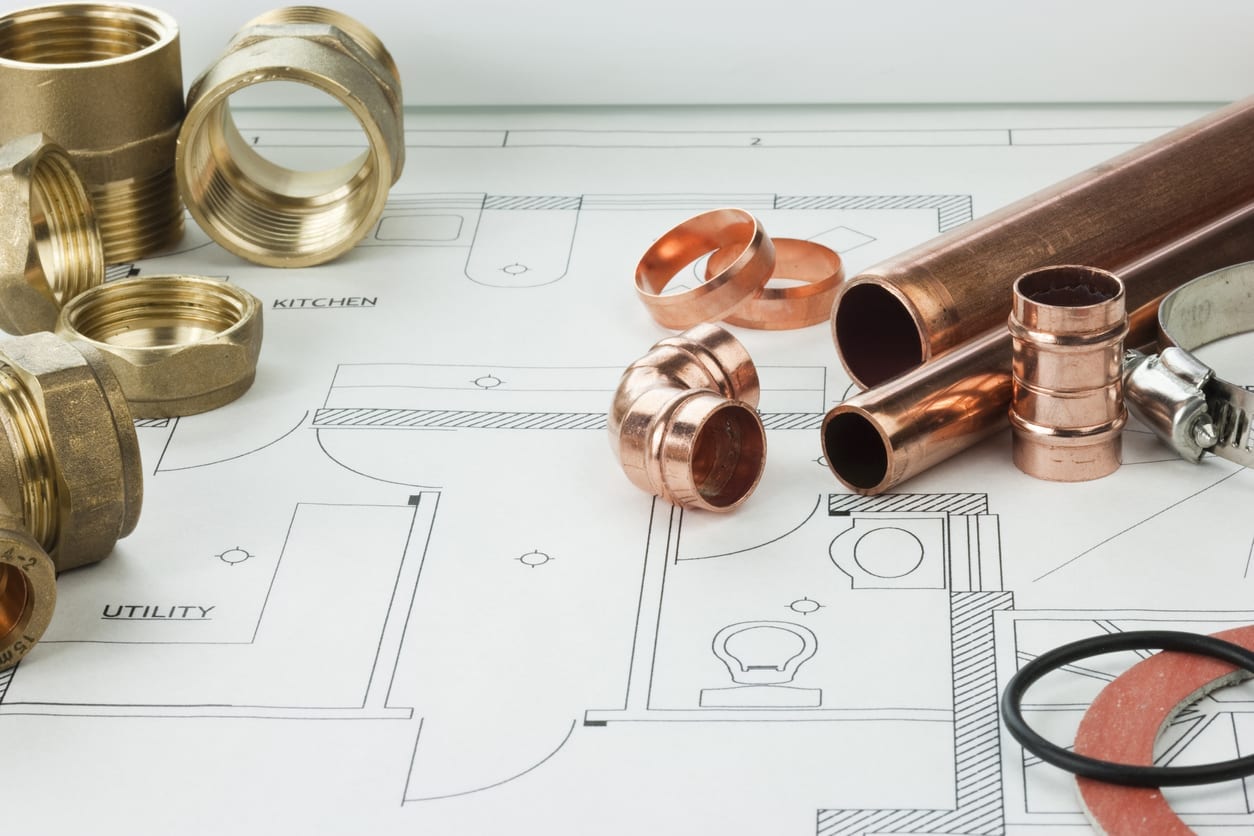Key Components of Your Home's Plumbing System
Information HereJust about everyone may have their own unique way of thinking involving Understanding Your Home's Plumbing Anatomy.

Recognizing how your home's pipes system works is important for every single homeowner. From providing tidy water for drinking, food preparation, and bathing to securely removing wastewater, a properly maintained pipes system is important for your family members's wellness and comfort. In this thorough guide, we'll check out the intricate network that comprises your home's pipes and offer pointers on upkeep, upgrades, and managing usual problems.
Intro
Your home's plumbing system is greater than simply a network of pipes; it's an intricate system that ensures you have access to tidy water and reliable wastewater removal. Recognizing its components and how they collaborate can aid you avoid pricey repairs and guarantee whatever runs efficiently.
Standard Components of a Pipes System
Pipelines and Tubing
At the heart of your plumbing system are the pipelines and tubes that lug water throughout your home. These can be made of different products such as copper, PVC, or PEX, each with its benefits in terms of toughness and cost-effectiveness.
Components: Sinks, Toilets, Showers, etc.
Fixtures like sinks, commodes, showers, and bath tubs are where water is used in your home. Recognizing how these fixtures connect to the plumbing system assists in detecting problems and planning upgrades.
Valves and Shut-off Factors
Shutoffs regulate the flow of water in your plumbing system. Shut-off valves are vital during emergency situations or when you need to make repair work, enabling you to isolate parts of the system without interfering with water flow to the whole house.
Water System
Main Water Line
The major water line links your home to the metropolitan water system or a private well. It's where water enters your home and is dispersed to various fixtures.
Water Meter and Stress Regulator
The water meter actions your water usage, while a stress regulatory authority makes sure that water moves at a risk-free stress throughout your home's plumbing system, protecting against damage to pipelines and fixtures.
Cold Water vs. Hot Water Lines
Recognizing the distinction in between cold water lines, which supply water straight from the major, and hot water lines, which lug warmed water from the water heater, assists in fixing and planning for upgrades.
Drain System
Drain Pipeline and Traps
Drain pipes carry wastewater away from sinks, showers, and toilets to the drain or sewage-disposal tank. Traps stop drain gases from entering your home and also trap particles that can cause blockages.
Air flow Pipelines
Ventilation pipes enable air right into the water drainage system, avoiding suction that could slow down water drainage and cause traps to vacant. Correct ventilation is important for preserving the honesty of your plumbing system.
Significance of Appropriate Drain
Guaranteeing correct drain avoids backups and water damages. Consistently cleaning up drains and keeping catches can avoid costly fixings and prolong the life of your plumbing system.
Water Heating Unit
Types of Hot Water Heater
Hot water heater can be tankless or conventional tank-style. Tankless heaters warm water on demand, while containers keep heated water for prompt use.
Just How Water Heaters Link to the Plumbing System
Recognizing how hot water heater link to both the cold water supply and warm water distribution lines aids in identifying issues like inadequate warm water or leaks.
Maintenance Tips for Water Heaters
On a regular basis flushing your hot water heater to eliminate debris, inspecting the temperature setups, and inspecting for leaks can expand its life expectancy and boost energy performance.
Typical Plumbing Problems
Leakages and Their Causes
Leaks can take place because of maturing pipes, loosened fittings, or high water pressure. Resolving leaks without delay avoids water damages and mold development.
Obstructions and Obstructions
Obstructions in drains and commodes are frequently caused by purging non-flushable products or a buildup of oil and hair. Using drainpipe screens and bearing in mind what goes down your drains pipes can protect against obstructions.
Signs of Pipes Problems to Expect
Low water stress, sluggish drains pipes, foul odors, or uncommonly high water expenses are signs of prospective plumbing issues that should be dealt with immediately.
Plumbing Maintenance Tips
Normal Inspections and Checks
Set up annual pipes inspections to catch problems early. Seek signs of leaks, rust, or mineral build-up in taps and showerheads.
DIY Upkeep Tasks
Simple tasks like cleansing faucet aerators, checking for bathroom leakages making use of color tablets, or insulating subjected pipelines in cool environments can protect against significant pipes concerns.
When to Call a Specialist Plumbing
Know when a plumbing problem calls for specialist expertise. Trying complex repairs without proper understanding can result in even more damages and greater repair service prices.
Upgrading Your Plumbing System
Factors for Updating
Upgrading to water-efficient fixtures or replacing old pipes can improve water quality, reduce water costs, and raise the worth of your home.
Modern Pipes Technologies and Their Advantages
Discover modern technologies like wise leak detectors, water-saving bathrooms, and energy-efficient water heaters that can save money and minimize ecological effect.
Expense Considerations and ROI
Determine the in advance costs versus lasting savings when considering plumbing upgrades. Many upgrades pay for themselves via reduced utility costs and less fixings.
Ecological Influence and Conservation
Water-Saving Fixtures and Appliances
Installing low-flow faucets, showerheads, and toilets can considerably decrease water usage without compromising performance.
Tips for Lowering Water Use
Simple practices like fixing leakages immediately, taking shorter showers, and running full lots of laundry and dishes can preserve water and lower your utility costs.
Eco-Friendly Pipes Options
Think about sustainable pipes products like bamboo for floor covering, which is durable and environmentally friendly, or recycled glass for counter tops.
Emergency Readiness
Steps to Take During a Pipes Emergency
Know where your shut-off valves lie and exactly how to turn off the water in case of a burst pipe or significant leak.
Relevance of Having Emergency Calls Helpful
Maintain contact info for local plumbing professionals or emergency situation services conveniently available for fast reaction during a pipes situation.
DIY Emergency Situation Fixes (When Suitable).
Momentary fixes like making use of air duct tape to patch a dripping pipe or positioning a bucket under a trickling faucet can decrease damage up until a professional plumbing professional arrives.
Final thought.
Understanding the makeup of your home's plumbing system encourages you to preserve it successfully, saving time and money on repair services. By following routine maintenance regimens and staying informed regarding modern pipes innovations, you can ensure your plumbing system runs efficiently for several years ahead.
HOW YOUR PLUMBING SYSTEM WORKS
Which Pipes Do What?
Blue lines = fresh water supply entering the building
Red lines = hot water supply entering the building
Grey lines = pipes carrying waste away from the building and venting pipes carrying gases away from the building (through the roof)
YOUR MAIN PLUMBING SYSTEMS
There are two main plumbing systems that support your home s basic plumbing needs one that brings clean water into your home, and one that sends dirty water away from your home. Connected to the toilet, bath, shower, and other faucets in your home, these two systems keep your water flowing in the right directions.
ACCESSING FRESH WATER
Fresh and clean water is brought into your home through the main water supply line . Filtered through one pipe, this water is pressured to flow into the various fixtures in your home at any given time.
This water can be sourced from a well located on your property, a pond or river (mostly cottages), or, as in most cases, from the city s municipal water treatment centre. However, it is important to note that water that is untreated, such as the water siphoned from ponds or rivers, may not be safe to drink. Personal water supplies always need to be treated for hardness and contaminants before consumed.
MUNICIPAL WATER SUPPLIES
Improve taste and odour
Remove sediment
Eliminate hardness
Reduce chlorine
COLD WATER SUPPLY VS. HOT WATER SUPPLY
Cold water flows into your home or building through the service line, which then distributes hot or cold water to your fixtures. This line is most commonly run through a central column that runs floor to floor. Hot water runs in short and straight pipes as the longer the pipeline, the more heat that will be lost in the transfer. Having shorter pipes also allows residents to access hot water more quickly.
WASTE WATER SYSTEM
Your wastewater system is divided into two parts pipes that send wastewater away from your home and venting pipes that send sewer gas away from your home. Sewage water travels through pipes that flush the water and waste towards local sewers that are operated and managed by your city or town. Most sewer systems rely on gravity to move the wastewater to where it needs to go.
The further away from your toilet or sink, the larger wastewater pipes become. This allows for waste to be disposed of from various parts of your home or business at once without pipe blockages. The angle and flow of these pipes are also essential for keeping your waste pipes clear of build up.
https://harrisplumbing.ca/how-your-home-plumbing-system-works/

HOW YOUR PLUMBING SYSTEM WORKS
Which Pipes Do What?
YOUR MAIN PLUMBING SYSTEMS
There are two main plumbing systems that support your home s basic plumbing needs one that brings clean water into your home, and one that sends dirty water away from your home. Connected to the toilet, bath, shower, and other faucets in your home, these two systems keep your water flowing in the right directions.
ACCESSING FRESH WATER
Fresh and clean water is brought into your home through the main water supply line . Filtered through one pipe, this water is pressured to flow into the various fixtures in your home at any given time.
This water can be sourced from a well located on your property, a pond or river (mostly cottages), or, as in most cases, from the city s municipal water treatment centre. However, it is important to note that water that is untreated, such as the water siphoned from ponds or rivers, may not be safe to drink. Personal water supplies always need to be treated for hardness and contaminants before consumed.
MUNICIPAL WATER SUPPLIES
COLD WATER SUPPLY VS. HOT WATER SUPPLY
Cold water flows into your home or building through the service line, which then distributes hot or cold water to your fixtures. This line is most commonly run through a central column that runs floor to floor. Hot water runs in short and straight pipes as the longer the pipeline, the more heat that will be lost in the transfer. Having shorter pipes also allows residents to access hot water more quickly.
WASTE WATER SYSTEM
Your wastewater system is divided into two parts pipes that send wastewater away from your home and venting pipes that send sewer gas away from your home. Sewage water travels through pipes that flush the water and waste towards local sewers that are operated and managed by your city or town. Most sewer systems rely on gravity to move the wastewater to where it needs to go.
The further away from your toilet or sink, the larger wastewater pipes become. This allows for waste to be disposed of from various parts of your home or business at once without pipe blockages. The angle and flow of these pipes are also essential for keeping your waste pipes clear of build up.
https://harrisplumbing.ca/how-your-home-plumbing-system-works/
We had been shown that article on Understanding Your Home's Plumbing Anatomy through a good friend on our other web blog. Enjoyed our posting? Please quickly share it. Let other people find it. Thanks so much for going through it.
Call Today